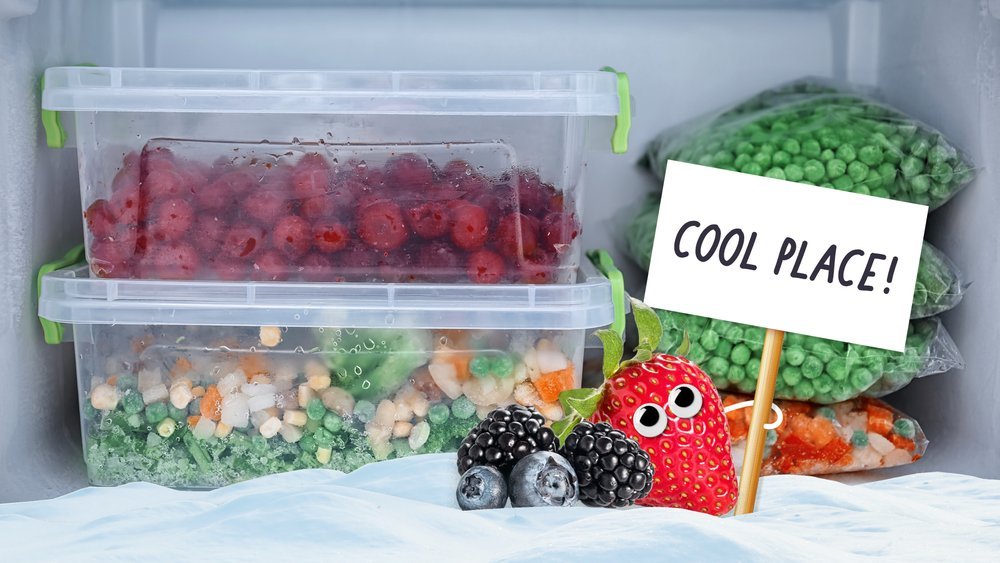
5 freezing myths debunked
In a flummox about freezing? Don't worry. We’ve done some research to help debunk common freezer myths!
Myth 1: Frozen foods are less nutritious
Not true. Frozen fruit and veg tend to be picked and frozen at the time of their peak ripeness – also their peak nutritional levels. Nutrient levels in frozen produce do inevitably decrease over many months, but overall they sure give fresh produce a run for its money.
Myth 2: Fridges, freezers and fridge-freezers are expensive to run
These are usually switched on 24 hours a day, 7 days a week, so it's well worth finding models that are energy efficient. Typically choosing an A+++ fridge freezer over an A+ unit will save you about £320 in energy bills over the lifetime of the product. However, as the energy rating is based upon classification by size, choosing a smaller fridge will use less energy than a larger fridge with the same energy rating. You can compare the total energy consumption of appliances by looking for their yearly energy consumption in kWh/annum displayed on the bottom right of the energy label.
Myth 3: Freezing food reduces its quality
Not if you do it right. Air coupled with moisture is the enemy of frozen food; ice crystals are the tale-telling sign of freezer burn. Extracting air from packs, using tupperware to seal the deal and reducing the surface area exposed will see your goods through their hibernation. Smalls foods with large surface areas are most affected.
Myth 4: There are lots of things that you can’t freeze
Most things are easily frozen, bar strong liquor. There are a few others to avoid: fine vegetables practically disintegrate, whilst frozen creams are prone to curdle whilst thawing. Freezing canned foods, fizzy drinks and eggs in their shells is a no and coffee has a tendency to absorb freezer smells as its oils break down in the process. As for the rest? Full freeze ahead!
Myth 5: You can't refreeze frozen food
Refreezing food isn’t dangerous, the danger is that food can spoil before it’s been refrozen. Freezing food does not kill bacteria, it just ‘freezes’ its action, so to speak. So, once thawed bacteria continues to multiply at the same rate it was multiplying at before being frozen. Use our throw, freeze, cook guide to stay safe with freezer food:
Cook if:
Raw meats are thawed, are still cold (below 5°C) but not icy. These can then be frozen after being cooked properly.
Prepared foods have defrosted. The quality of the food is likely to deteriorate and it’s best to be on the safe side with mixed food groups in one dish.
Raw fish and shellfish should smell of the ocean, but nothing else. Once cooked you can refreeze after, but be sure to freeze it as soon as possible after cooking. Do not refreeze raw fish and shellfish. This is because it takes time to refreeze, time that bacteria can use to keep growing and it will take more time to thaw and cook before you eventually eat it.
Refreeze if:
Temperatures are still below 5°C. Food should not have been kept out of the freezer for more than a couple of days, especially when it comes to meat.
Thawed fruits dosen‘t smell bad or have any signs of mould. They will be softer but they won’t be off. It takes a long time for fruits to ferment and you usually know about it when they do!
Vegetables are still solid and icy. If they have thawed do not refreeze, your nose may tell you this.
Food is baked. Trusty old baked goods are pretty dry and therefore don’t change much in the freezer.
Throw away if:
Temperature went above 5°C, the temperature range in which food-borne bacteria can grow is 5°C to 63°C.
It smells funny, trust in your senses.
You have any doubts.
Wondering what should be kept out of the cold? Look no further than our guide to freezer friendly food.





